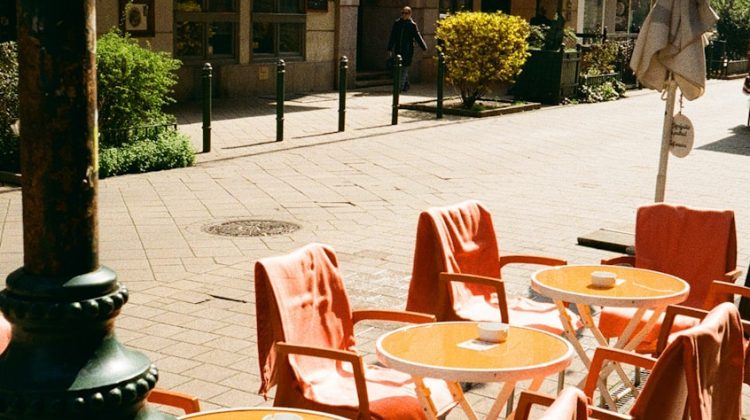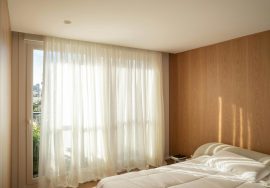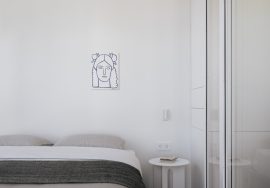
Clear Space, Clear Mind: Embracing Minimalist Living for a Balanced Life
In a world where busyness is often worn like a badge of honor and our lives are flooded with notifications, advertisements, and endless to-do lists, it is no surprise that many people feel mentally and physically overwhelmed. Our homes, once considered sanctuaries, can quietly turn into reflections of that chaos—crowded with clothes we no longer wear, gadgets we barely use, and sentimental items collecting dust. This is where minimalist living comes into play. Far from being an aesthetic trend of white walls and empty shelves, minimalism is a philosophy that prioritizes intentionality, clarity, and freedom from the excesses that weigh us down.
Minimalist living isn’t about deprivation or living in a stark, furniture-less apartment. It’s about thoughtfully reducing the clutter in both your home and your mind so that the things you do keep genuinely serve a purpose or bring you joy. This shift can transform not only the appearance of your living space but also the quality of your everyday life.
Understanding the Essence of Minimalism
At its core, minimalism is about living with less so you can experience more. It invites us to step back and evaluate what truly matters, cutting through the noise of consumer culture. While social media often portrays minimalism as a purely visual lifestyle—a perfectly curated space with a single potted plant and a coffee table book—its deeper essence lies in the intentionality behind your choices.
When you embrace minimalism, you begin to view every object, task, and commitment through a new lens: “Does this serve me? Does it add value to my life?” This question isn’t limited to physical possessions. It extends to the apps on your phone, the subscriptions that drain your wallet, and the social obligations that deplete your energy. By decluttering in both tangible and intangible ways, you create room for peace, focus, and personal growth.
Decluttering Your Home: Creating a Space That Breathes
Physical clutter isn’t just a visual nuisance—it subtly affects your mental state. Studies have shown that messy environments can increase stress and reduce productivity. When every surface is piled with stuff and every closet threatens to overflow, it creates a constant background noise for the brain, a sense that something is always unfinished.
Step One: Start Small
Many people feel paralyzed by the idea of decluttering their entire home. The key is to start with one space—a drawer, a shelf, or even just a corner of a room. Success in one small area fuels the motivation to tackle the next.
Step Two: Categorize and Evaluate
A popular approach, inspired by the KonMari method, involves handling each item and asking yourself whether it sparks joy or serves a clear function. This process helps distinguish between things that genuinely enhance your life and things that simply occupy space out of habit or guilt.
Step Three: Simplify, Then Organize
Minimalism is not just organizing clutter into prettier containers; it’s letting go of what you don’t need in the first place. Once you’ve pared down your possessions, organization becomes effortless. Closets open without things spilling out, kitchen counters stay clear, and living areas feel open and inviting.
Decluttering Your Mind: Letting Go of Mental Noise
Minimalism doesn’t stop at your doorstep. Many of us carry mental clutter in the form of racing thoughts, endless to-do lists, and constant digital distractions. Just like a cluttered room, a cluttered mind leaves little space for creativity, focus, or genuine relaxation.
Digital Decluttering
Our phones, laptops, and smartwatches constantly compete for our attention. Notifications from emails, social media, and news apps can fragment our focus. Practicing digital minimalism—turning off nonessential notifications, organizing apps, or even scheduling tech-free hours—can provide immediate relief.
Simplifying Commitments
A packed calendar may look productive, but it often comes at the cost of your well-being. Minimalism encourages saying “no” to obligations that don’t align with your priorities. By streamlining commitments, you create space for activities and relationships that truly matter.
Mindful Practices
Meditation, journaling, or simply spending time in nature helps quiet mental chatter. These moments of pause act like the mental equivalent of clearing a room: suddenly, the important things stand out.
The Emotional Benefits of Living with Less
Minimalist living offers more than just a tidy home or a neat calendar—it delivers emotional relief. Releasing excess possessions often brings a surprising sense of lightness. We let go of not just objects but also the guilt, nostalgia, and “what if” scenarios attached to them.
Fewer possessions mean fewer things to clean, maintain, and worry about. This naturally reduces stress and frees up time for meaningful activities. Instead of spending weekends shuffling items from one storage box to another, you can read a book, go for a walk, or have an unhurried conversation with a loved one.
On a deeper level, minimalism nurtures gratitude. When your environment is stripped of distractions, the items that remain carry greater significance. Your favorite mug, the sunlight in your living room, or the photo of a cherished memory suddenly command more attention and appreciation.
Practical Tips for Embracing Minimalism
While the philosophy is simple, adopting a minimalist lifestyle is a gradual process. Here are practical steps to guide your journey:
Adopt the One-In, One-Out Rule: For every new item you bring home, let go of one. This keeps clutter from creeping back in.
Set Clear Boundaries: Designate specific spaces for items and resist the urge to overfill them. If your bookshelf is full, it’s a sign to let something go before adding more.
Create Rituals of Reflection: Periodically review your space and commitments. Ask yourself whether they still serve your goals and values.
Prioritize Experiences Over Objects: Instead of buying more things, invest in experiences—travel, learning, and shared moments bring lasting joy without taking up physical space.
Celebrate Progress, Not Perfection: Minimalism is not a competition to have the least stuff. It’s about creating harmony between your life and your surroundings.
Minimalism Beyond the Home
Once you embrace minimalism in your personal life, its principles often extend to other areas. Some people find themselves adopting minimalist approaches to work—streamlining projects, simplifying workflows, and reducing unnecessary meetings. Others apply it to their diets, choosing whole, simple foods over highly processed options. Even finances can benefit from this mindset, with fewer impulse purchases and more conscious spending.
Minimalism, then, is less about having a “look” and more about creating alignment. It allows you to step away from autopilot living, break free from societal pressures to accumulate more, and focus on what genuinely enriches your life.
The Reward: A Life with Room to Breathe
When your home and mind are free from excess, something remarkable happens: life slows down in the best possible way. Morning routines feel calmer without the chaos of searching through overstuffed closets. Evenings become more peaceful when your environment doesn’t constantly remind you of chores and unfinished tasks.
Most importantly, the clarity you cultivate in your physical and mental spaces begins to ripple outward. You make more intentional choices, nurture relationships with greater presence, and find joy in simplicity. Minimalism is not an end goal but a tool—a way to make room for the life you’ve always wanted to live, one uncluttered space and one unburdened thought at a time.










